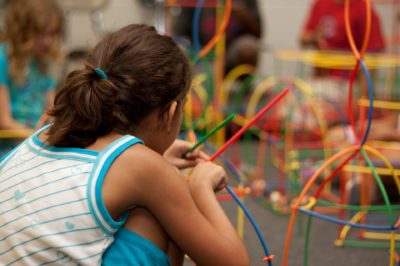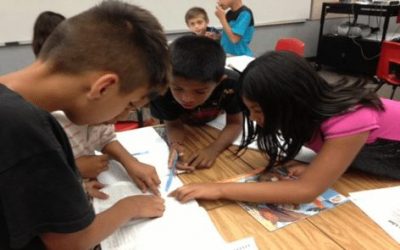Breakfast Club Blog

The BOOST Breakfast Club Blog is a curated space where bloggers from around the world contribute content on a continual basis about a variety of topics relevant to in and out-of-school time. The BOOST Breakfast Club blog is at the heart of an ongoing dialogue where expanded learning and education professionals share their personal thoughts and stories from the in and out-of-school time field. They also tell us what they ate for breakfast!
The BOOST Breakfast Club Blog is Brain Food for In and Out-of-School Time Leaders!
Interested in becoming a blogger? Email breakfastclub@boostcollaborative.org
Click here to Register for a free account or click here to Login to your existing account.
Bring a Strength-Based Approach to the Way You Communicate
Recently, I was reading program descriptions and program plans which included goals. As always, I was impressed with and proud of what afterschool program staff are able to accomplish and what they strive to do. One thing gave me pause. Deficit language reared its ugly head in more than a few of the program descriptions and plans. I realized that as a field we often talk about using a strength-based approach in our program activities and in our relationships with youth and family. Yet, we have h...Read More
Where the Rubber Meets the Road- Planning a Successful Afterschool Activity
Building on the concept that the most productive learning comes through active involvement, the effectiveness of any program that seeks to develop skills in youth must be rich in activity. Remember, most of the students sit for almost 7.5 hours a day! They are eager to be involved in activities that allow for action and interaction. Enthusiasm is contagious and movement essential. You do not need a repertoire of several hundred activities. Such a large selection is simply not practical and, more...Read More
Boldly Digging into Diversity
In a large urban district like Metro Nashville Public Schools, my biracial children felt rather comfortable. There were other brown faces in their classrooms. For the most part, they didn’t stand out as “different.” Of course, they did encounter the occasional question about ethnicity from a peer. One of my sons even had a white teacher treat him unfairly because of the color of his skin. But, for the most part, my kids felt like they belonged in their diverse schools. When my kids transferred t...Read More
Focus on the 4Cs
I’m addicted to podcasts. They are my friend on long commutes and I’ve learned so much about so many random topics from Mars exploration to discoveries deep in the ocean. Every one of them leaves me curious and eager to learn more. One of my favorites is How I Built This, with Guy Raz. Because I’m an educator, I lose myself for miles listening to stories about the masterminds who had an idea they took all the way to a successful business. How did they do it? Why did they persist when others gave...Read More
A Holistic Approach To Helping Traumatized Kids, Adults, and Communities
I’m a voracious consumer of news. Each morning or lunch break, I set aside time to read headlines, scan news tickers, and flag the day’s trending developments on social media. Later in the day, I pick a few headlines or bookmarked videos, and dig into the details. When I have time, I read across news sources – traditional pieces, independent sources, and opinion bloggers – to provide more nuance to my understanding and sort out the general zeitgeist on the news of the day. Honestly, I think the ...Read More
Algorithms with Empathy
The algorithms, math, hardware, physics, engineering, computer science, and artificial intelligence behind breakthrough discoveries like those spearheaded by Elon Musk and his teams require a person to be emotionally, socially, and physically prepared for the failures and successes of attempting to reimagine and change our world. I watched with great admiration as one of the most successful human beings of our time, possibly in all human history, cried at the thought of his heroes knocking him f...Read More
How Clue and The 4C’s Inspire Connection, Community and Creativity
How DO board games inspire Connection, Community, and Creativity, you ask? Last week, eight middle school girls were consumed with the details related to who murdered Mr. Boddy. This wasn’t the latest episode of a crime drama, and thankfully wasn’t something in the news, but instead was the culminating event wrapping up their Secret Agent badge-an intense game of Clue. I’m lucky enough to be the troop leader for my daughter’s Girl Scout troop, an out-of-school time activity that she and mo...Read More
A Relevant Repost! Tilling the Soil: Staff Turnover
Corn as high as an elephant’s eye? Why stop there? How is farming equivalent to staff turnover? The seeds are bought. The seller promised a yield surpassing anything ever seen before. Acre upon acre of corn growing much, much higher than an elephant’s eye. The new tractor had been purchased. Much better than the old tractor. And just for show, you bought new work gloves and some new boots. The rains had been good, the weather fair for growing. The table was set for record yields and...Read More
“Teacher, I’m A 6!” – Thoughts on Children & The Enneagram
Use of The Enneagram – a personality profiling system – has risen in popularity in the past few years. Some scholars trace its use to ancient cultures and religions, but its use in post-modern self-awareness growth can be more attributed to psychological, sociological, and mystical studies beginning in the 1960’s and 1970’s. Serious Enneagram practitioners and scholars would caution people about using it as a parlour trick to amuse ourselves. It was, after all, designed to help us un...Read More
- 1
- 2















